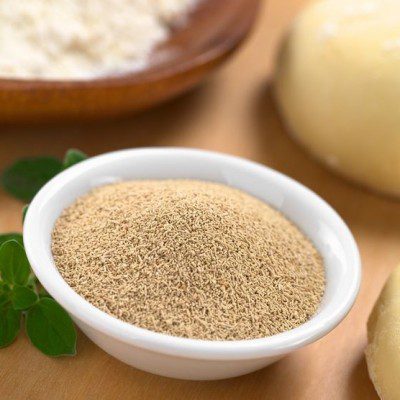[fusion_builder_container hundred_percent=”yes” overflow=”visible”][fusion_builder_row][fusion_builder_column type=”1_2″ last=”no” spacing=”yes” center_content=”no” hide_on_mobile=”no” background_color=”” background_image=”” background_repeat=”no-repeat” background_position=”left top” hover_type=”none” link=”” border_position=”all” border_size=”0px” border_color=”” border_style=”solid” padding=”” margin_top=”” margin_bottom=”0px” animation_type=”0″ animation_direction=”down” animation_speed=”0.1″ animation_offset=”” class=”” id=””][fusion_text]

Quick rise dry yeast does not need prior re-hydration.
[/fusion_text][/fusion_builder_column][fusion_builder_column type=”1_2″ last=”yes” spacing=”yes” center_content=”no” hide_on_mobile=”no” background_color=”” background_image=”” background_repeat=”no-repeat” background_position=”left top” hover_type=”none” link=”” border_position=”all” border_size=”0px” border_color=”” border_style=”” padding=”” margin_top=”” margin_bottom=”” animation_type=”” animation_direction=”” animation_speed=”0.1″ animation_offset=”” class=”” id=””][fusion_text]
Quick Rise Dry Yeast
Also Know As Rapid Rise Yeast
What is Quick Rise Dry Yeast?
Quick rise dry yeast is also referred to as instant yeast or rapid rise dry yeast. Its activity is not significantly different than that from compressed yeast. It can be added directly to dry ingredients without prior re-hydration.[/fusion_text][/fusion_builder_column][fusion_builder_column type=”1_1″ background_position=”left top” background_color=”” border_size=”” border_color=”” border_style=”solid” spacing=”yes” background_image=”” background_repeat=”no-repeat” padding=”” margin_top=”0px” margin_bottom=”0px” class=”” id=”” animation_type=”” animation_speed=”0.3″ animation_direction=”left” hide_on_mobile=”no” center_content=”no” min_height=”none”][fusion_text]
Origin
Quick rise dry yeast was invented in the early 80s by Fleischmann Company.1
Function
Quick rise dry yeast is produced with genetically engineered yeast strains. These strains retain high yeast activity after drying. The drying process for quick rise dry yeast is also specially designed. The drying process produces highly porous particles, which gives them the ability to rehydrate rapidly. One disadvantage of this porosity is that it also provides access to oxygen from the air, resulting in rapid loss of activity during storage. Accordingly, these products must be hermetically packaged in inert gas or under a vacuum.
Quick rise dry yeast is finely ground and thus absorbs moisture faster, rapidly converting starch and sugars to carbon dioxide, the tiny bubbles that make the dough expand and stretch.
The protein content of these yeasts may vary from 38% to 60%, and a moisture content of 4-6% is highly desirable. 2
Commercial Production
Quick rise dry yeast has a relatively fine particle size and low moisture content compared to conventional active dry yeast. The fine particle size makes quick rise dry yeast dispense uniformly throughout the dough or batter ingredients and this contributes to its quicker leavening activity. To insure adequate storage stability, the moisture content of quick-rise dry yeast is less than 6% by weight and more typically on the order of about 4 to 5% by weight. Removing the free water can only lower the water content to 8% by weight.
Eliminating a portion of the bound water from yeast can cause severe damage to the yeast cell membrane. To overcome this problem, the drying of yeast suspension can be conducted in the presence of particular lipophilic surfactants or wetting agents.3
Application
Quick rise dry yeast can be used interchangeably with active dry yeast. The advantage is the rising time is half that of the active dry.4
When using quick rise dry yeast, the bread recipe only needs one rise. The first rise is replaced by a ten minute rest, and you do not need to “punch the dough down” afterwards. The second rise takes place after the dough has been shaped into a loaf.4
Quick rise dry yeast can be substituted for compressed yeast at the rate of 33-40% by weight in sponge and dough systems because its activity is very close to that of compressed yeast on an equivalent solids basis.1 For example, if you want to substitute 1lb of compressed yeast, use only 0.33-0.4lb of quick rise yeast and substitute the rest of the weight with water. On a usage basis, 0.33 g of quick rise dry yeast = 1.0 g of compressed yeast and 0.45 g of active dry yeast.5
FDA Information
In the article 21CFR172.896 in FDA Code of Federal Regulations, dried yeast may be safely used in food provided the total folic acid content of the yeast does not exceed 0.04 milligram per gram of yeast (approximately 0.008 milligram of pteroyglutamic acid per gram of yeast).6
References
- “Yeast: An Instant History.” Joe Pastry. 11 July 2013. joepastry.com/2013/yeast-an-instant-history-2/. Accessed 04 Jan. 2017.
- Panchal, Chandra J. “Chapter 6. Yeast Selection for Baking.” Yeast Strain Selection. New York: M. Dekker, 1990. 144-45. Print.
- Pomper, Seymour, Gary Cole, and Saul Scheinbach. “Rehydratable Instant Active Dried Yeast.” United States Patents (1989). Patent number US 4764472 A.
- “Yeast In Bread Making” What’s Cooking America. 05 Nov. 2016. whatscookingamerica.net/Bread/yeastbreadtip.htm. Accessed 04 Jan. 2017.
- Wolt, M. J., and B. L. D’ Appolonia. “Factors Involved in the Stability of Frozen Dough. II. The Effects of Yeast Type, Flour Type, and Dough Additives on Frozen-dough Stability.” Cereal Chemistry 61.3 (1984): 213-21.
- “CFR – Code of Federal Regulations Title 21CFR172.896.” U.S. Food & Drug Administration. 1 Apr. 2016. www.accessdata.fda.gov/scripts/cdrh/cfdocs/cfcfr/CFRSearch.cfm?fr=172.896. Accessed 05 Jan. 2017.
[/fusion_text][/fusion_builder_column][/fusion_builder_row][/fusion_builder_container]

